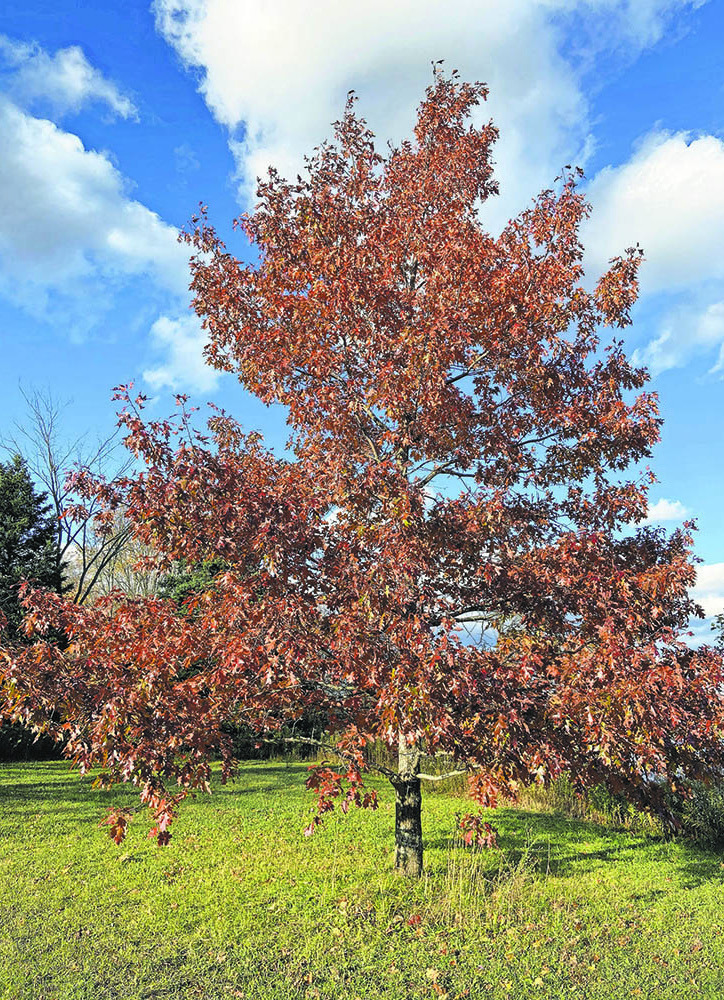Red Oak or quercus rubra, is a native tree to the U.P. and much of the eastern United States. Red oaks can be found throughout the Hiawatha National Forest in Alger County, as well as in the Deerton area. Red oak is an important tree species for diversity, wildlife food, pollinators, and timber production especially for veneer products and indoor lumber. Oaks tend to be a symbol of strength and many people have an affinity to them for their longevity, beautiful fall foliage, and wildlife benefits.
Red oak leaves can be identified by their pointy tips at the end of their leaves, which turn a beautiful red in autumn. They grow on a variety of soils but they tend to prefer loam to silt loam soils that are well drained. Red oaks will tolerate some shade but grow best in full sun. At maturity, red oaks can reach heights of 80+ feet tall. They’re often found with other tree species such as maple, beech, paper birch, basswood, black cherry, white pine, and hemlock. Do you have any red oak trees on your property? What other tree species are they growing with?
It can take 25 years for an oak species to produce acorns. It may take up to 50 years to produce an abundant acorn crop. Typically oak species will produce “bumper” or excellent acorn crops every 2-5 years. According to the USFS1 “even on good years only 1 percent of acorns become available for regeneration of red oak and as many as 500 or more acorns may be required to produce one 1-year old seedling.” Given the slow reproductive rates, it’s no wonder oak trees are often out competed by other more rapid growing trees. Throw in a few hungry critters and it’s easy to see why it can be a challenge for oak species to get established.
Red oaks are well known for their “tasty” acorns. Deer, bear, squirrel, chipmunks, turkey, grouse, blue jays and other birds and wildlife depend on red oak acorns for their high nutrient content. Blue jays and squirrels are known for “planting” oak trees when they forget where they stashed the tasty morsels. According to the National Wildlife Federation (NWF2), oaks are also considered a “keystone species which are native plants critical to the food web and necessary for many wildlife speceis to complete their lifecycle.” Oaks are critical host plants for as many as 436 caterpillar species of moths and butterflies which are also a food source for a variety of other wildlife (NWF2). As you can see, oaks are one of the most valuable trees a person can plant to benefit wildlife and beneficial insects.
Whether you wish to increase diversity in your forest, provide wildlife food and shelter, or if you want to enjoy one of the most majestic trees in the forest, planting red oaks can provide a lifetime of enjoyment and services to you and generations to come.
